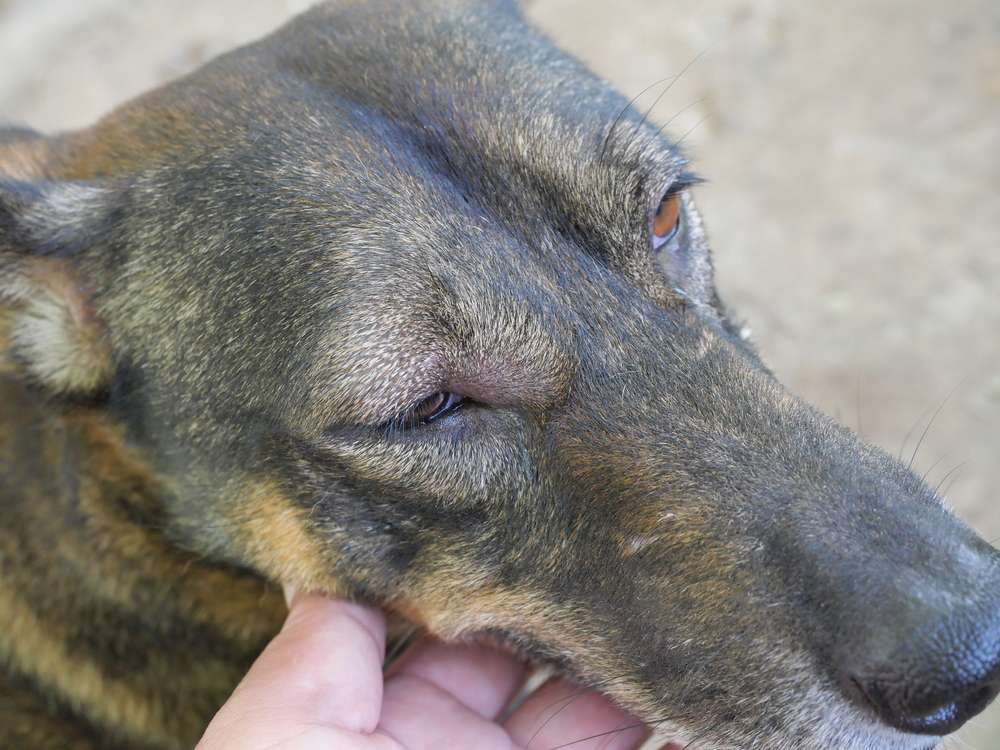Key Takeaways:
- Lymphedema in dogs is a chronic condition characterized by the accumulation of lymph fluid in certain areas of the body.
- It can be caused by various factors, including trauma, infection, tumors, or congenital abnormalities.
- Common symptoms of lymphedema in dogs include swelling, discomfort, skin changes, and difficulty moving.
- Treatment options for lymphedema in dogs may include manual lymphatic drainage, compression therapy, medications, and surgery.
- Proper management of lymphedema in dogs is crucial to prevent complications and improve their quality of life. Regular monitoring and follow-up with a veterinarian are essential.
Are you a dog lover? Are you concerned about your furry friend's health and well-being? If so, then understanding the topic of lymphedema in dogs can be incredibly valuable. Lymphedema is a condition that affects the lymphatic system, causing swelling and discomfort in our canine companions. By delving into this subject, you will not only gain knowledge about this common ailment but also learn how to recognize its symptoms and provide necessary care for your beloved pet. With one in five dogs being affected by lymphedema at some point in their lives, it's essential to be equipped with the right information to ensure their happiness and quality of life. So, let's dive into the world of lymphedema in dogs and discover how we can be proactive in keeping our four-legged friends healthy and happy!
Understanding Lymphedema in Dogs: Causes and Effects
Lymphedema in dogs is a condition that affects the lymphatic system, which plays a crucial role in maintaining the body's immune system. The lymphatic system consists of a network of vessels and nodes that carry lymph fluid throughout the body, helping to remove waste and toxins. When this system becomes damaged or blocked, it can lead to an accumulation of fluid in certain areas, causing swelling and discomfort.
There are several causes of lymphedema in dogs. One common cause is trauma or injury to the lymphatic vessels or nodes, such as from surgery or radiation therapy. In some cases, it can also be a congenital condition, meaning the dog is born with an abnormality in their lymphatic system. Additionally, certain breeds may be more prone to developing lymphedema due to genetic factors.
The effects of lymphedema can vary depending on the severity of the condition. Mild cases may only result in slight swelling and discomfort, while more severe cases can lead to significant swelling, skin infections, and mobility issues for the dog. If left untreated, chronic lymphedema can cause long-term damage to the affected area and impact the overall quality of life for the dog.
Diagnosing Lymphedema in Dogs: Signs and Symptoms to Look Out For
Recognizing the signs and symptoms of lymphedema in dogs is essential for early diagnosis and effective treatment. While each case may vary slightly, there are some common indicators that pet owners should be aware of.
One primary symptom of lymphedema is swelling in one or more limbs or body parts. This swelling may appear suddenly or gradually over time and can range from mild puffiness to significant enlargement. The affected area may feel warm to touch and could be accompanied by redness or changes in skin texture.
In addition to swelling, other signs to look out for include:
- Limping or difficulty walking
- Discomfort or pain in the affected area
- Skin infections or sores that do not heal
- Thickened or hardened skin
- Loss of hair in the affected area
If you notice any of these symptoms in your dog, it is crucial to consult with a veterinarian for a proper diagnosis. The vet may perform a physical examination, review the dog's medical history, and potentially recommend further tests such as blood work or imaging studies to confirm the presence of lymphedema.
Preventing Lymphedema in Dogs: Causes and Prevention Tips
While some cases of lymphedema in dogs may be unavoidable due to genetic factors or other underlying conditions, there are steps pet owners can take to minimize the risk and prevent its development.
One primary cause of lymphedema is trauma or injury to the lymphatic system. To reduce this risk, it is important to handle your dog gently and avoid any activities that could lead to excessive pressure on their limbs or body. This includes avoiding rough play, jumping from high surfaces, and preventing them from getting into situations where they could sustain injuries.
Maintaining a healthy weight for your dog is also crucial in preventing lymphedema. Obesity can put additional strain on the lymphatic system and increase the likelihood of fluid accumulation. Providing a balanced diet and regular exercise can help keep your dog at a healthy weight and reduce the risk of developing this condition.
Regular veterinary check-ups are essential for early detection and prevention of lymphedema. Routine examinations allow veterinarians to monitor your dog's overall health and identify any potential issues before they become more severe. They can also provide guidance on proper care techniques specific to your dog's breed or individual needs.
By being proactive in preventing lymphedema, pet owners can help ensure their dogs live happy, healthy lives without the burden of this condition.
Lymphedema in Dogs: Breeds at Risk and Possible Prevention Measures
While lymphedema can affect any dog, certain breeds may be more prone to developing this condition due to genetic factors. It is important for owners of these breeds to be aware of the increased risk and take preventive measures accordingly.
Some dog breeds that are commonly associated with a higher risk of lymphedema include:
1. Labrador Retrievers: These friendly and active dogs are known to have a genetic predisposition to lymphedema. Regular exercise, weight management, and avoiding excessive strain on their limbs can help reduce the chances of developing this condition.
2. Old English Sheepdogs: This breed is also prone to lymphedema due to genetic factors. Regular grooming and maintaining proper hygiene can help prevent skin infections that often accompany this condition.
3. Bloodhounds: Bloodhounds have loose skin and folds, which can make them more susceptible to lymphatic issues. Keeping their skin clean and dry, as well as providing regular veterinary care, can help minimize the risk.
While prevention measures cannot guarantee complete avoidance of lymphedema in these breeds, they can significantly reduce the likelihood and severity of the condition. Pet owners should consult with their veterinarian for breed-specific advice on how to best prevent or manage lymphedema in their dogs.
Treating Lymphedema in Dogs: Management Techniques and Care Options
The treatment of lymphedema in dogs typically involves a combination of management techniques and care options tailored to the individual needs of each dog. While there is no cure for this condition, proper care can help alleviate symptoms, reduce swelling, and improve the overall quality of life for affected dogs.
One primary aspect of treatment is managing the underlying cause or trigger of lymphedema. This may involve addressing any injuries or infections that may be contributing to fluid accumulation. In cases where congenital abnormalities are present, surgical interventions may be considered to improve lymphatic flow.
To manage the swelling and discomfort associated with lymphedema, veterinarians may recommend:
1. Compression therapy: This involves using specialized bandages or garments to apply gentle pressure on the affected area, aiding in fluid drainage and reducing swelling.
2. Manual lymphatic drainage: This technique involves gentle massage movements aimed at stimulating lymphatic flow and promoting the removal of excess fluid.
3. Medications: In some cases, veterinarians may prescribe medications such as diuretics or antibiotics to help reduce fluid buildup and prevent infections.
In addition to these treatments, proper wound care and hygiene are crucial in preventing secondary infections that often accompany lymphedema. Regular cleaning of the affected area, keeping it dry, and applying appropriate topical treatments can help minimize the risk of complications.
It is important for pet owners to work closely with their veterinarian to develop a comprehensive treatment plan tailored to their dog's specific needs. Regular follow-up appointments will allow for adjustments in treatment as necessary and ensure ongoing management of lymphedema.
Lymphedema in Dogs: Is a Cure Possible or Lifelong Care Required?
While there is currently no known cure for lymphedema in dogs, proper management and care can significantly improve their quality of life. With appropriate treatment techniques and ongoing monitoring, many dogs with lymphedema can lead happy and fulfilling lives.
Lymphedema requires lifelong care as it is a chronic condition that cannot be completely eradicated. However, by following the recommended treatment plan provided by your veterinarian, you can effectively manage the symptoms and reduce any discomfort or limitations caused by this condition.
Regular veterinary check-ups are essential for monitoring the progression of lymphedema and making any necessary adjustments to the treatment plan. It is also important for pet owners to remain vigilant in observing any changes in their dog's condition and promptly report them to their veterinarian.
With proper care, dogs with lymphedema can continue to enjoy their daily activities and maintain a good quality of life. Providing them with a safe and comfortable environment, along with the necessary medical interventions, will help ensure that they can live happily despite this chronic condition.
In conclusion, lymphedema is a condition that can affect dogs and cause swelling in their limbs. It is important for dog owners to be aware of the signs and symptoms and seek veterinary care if needed to provide proper treatment and support for their furry friends.
Is lymphedema curable in dogs?
No surgical techniques that have been discussed can completely cure lymphedema. The only technique that has been commonly reported in dogs is the removal of affected tissues. While some cases have shown success with this procedure, others have not found it to be beneficial or have experienced severe complications.
Why does my dog have lymphedema?
Lymphedema can be caused by genetic factors or by problems with the development of the lymphatic system. These can include issues like the lymphatic system not forming properly, faulty valves, and scarring of lymph nodes. Other possible causes can include heart disease, injury to the lymphatic vessels or nodes, and exposure to heat or radiation.
What are the signs of lymphoma in a dog?
The mandibular lymph nodes, located under the jaw, and the popliteal lymph nodes, located behind the knee, are the most easily found lymph nodes on a dog's body. Other signs of lymph node issues in dogs include decreased appetite, lack of energy, weight loss, swelling in the face or legs, and sometimes increased thirst and urination.
How do you get rid of lymphedema in dogs?
To treat and prevent lymphedema in dogs, it is recommended to give them rest and massage the affected limb to improve lymph circulation. In cases of primary lymphedema, long-term pressure wraps and physical therapy can be beneficial in improving the dog's quality of life. Surgery may also be suggested after conducting lymphangiography to determine the appropriate course of action.
How quickly do dogs with lymphoma deteriorate?
Dogs who have lymphoma and do not receive treatment, or are only given steroids for comfort, typically have a lifespan of about two months. However, if they undergo chemotherapy, the average survival time increases to eight months to one year, and some dogs have even been known to live for over two years.
What triggers lymphedema?
Cellulitis and filariasis are infections that can lead to lymphoedema. Cellulitis, if severe, can harm the tissue surrounding the lymphatic system and result in scarring. Lymphoedema can also be caused by filariasis, a parasitic disease caused by tiny worm-like organisms.
















